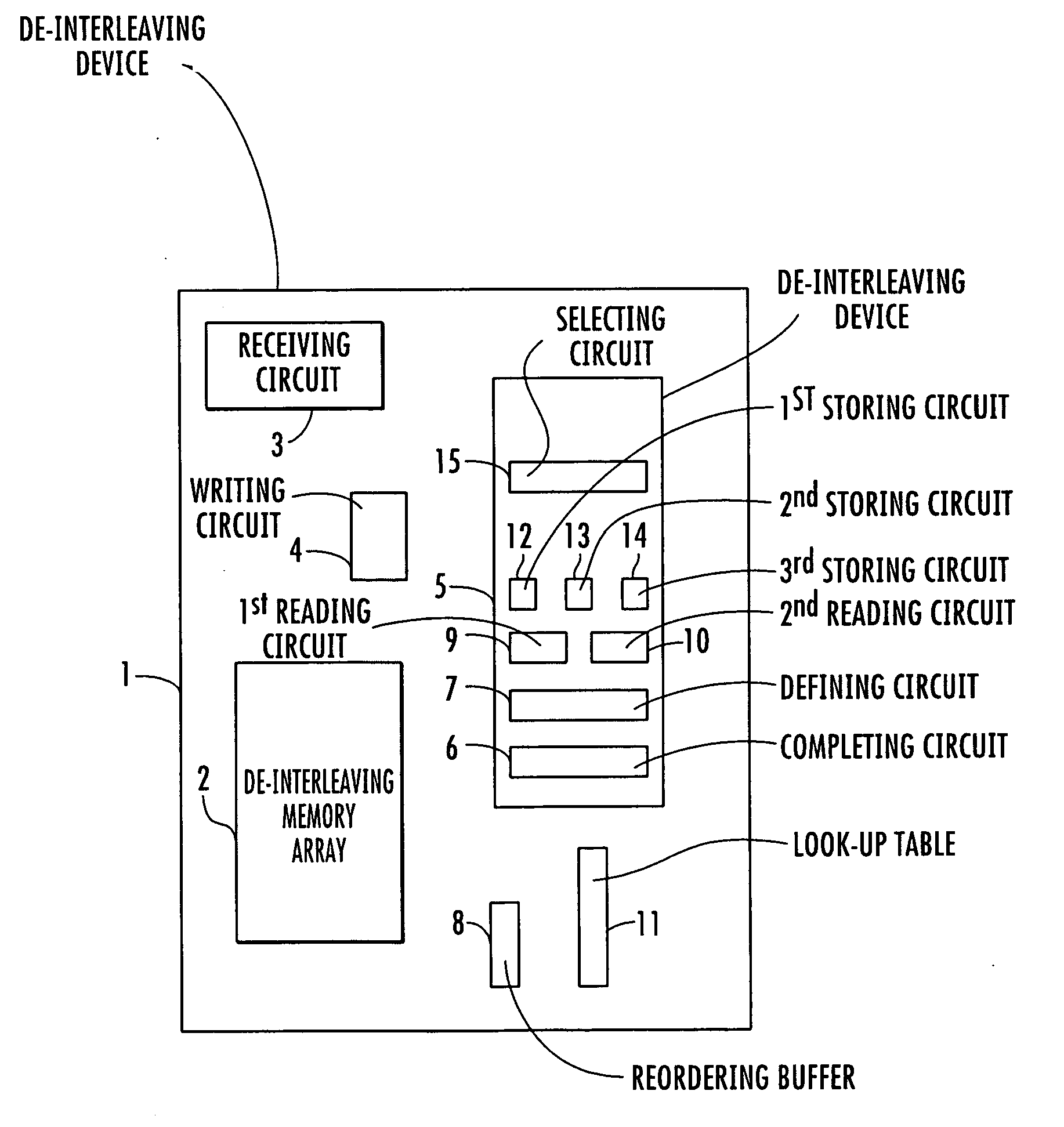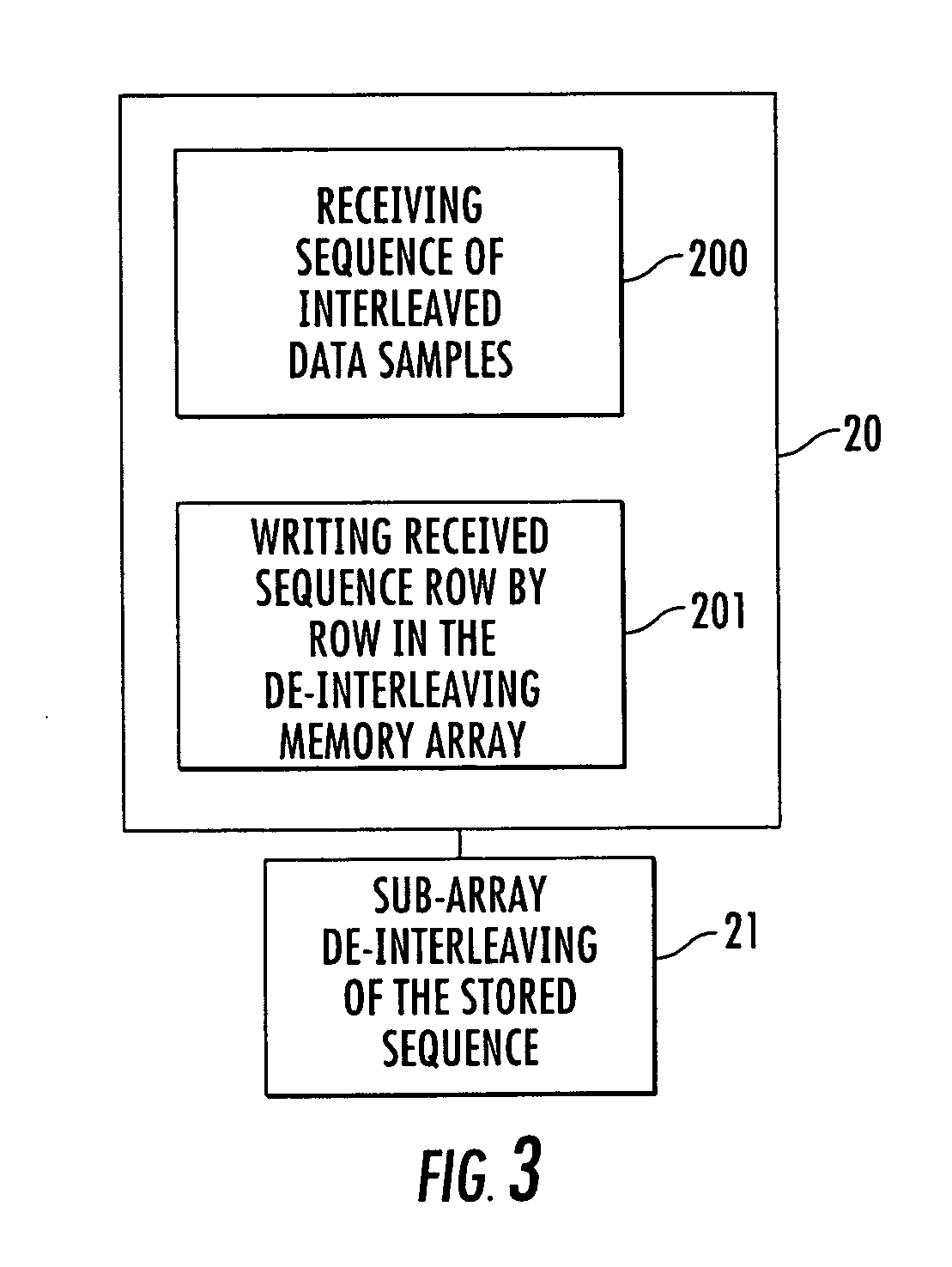Method and device of de-interleaving successive sequences of interleaved data samples
a data sample and successive sequence technology, applied in the field of wireless communication systems, can solve the problems of high memory access rate, memory re-use bottleneck, no scalability, etc., and achieve the effect of reducing memory access rate and avoiding memory re-use bottlenecks
- Summary
- Abstract
- Description
- Claims
- Application Information
AI Technical Summary
Benefits of technology
Problems solved by technology
Method used
Image
Examples
Embodiment Construction
[0031] Referring now to FIG. 1, a de-interleaving device according to the invention is illustrated, which is incorporated in the reception chain of a cellular mobile phone TP. However, the invention is not limited to this particular application.
[0032] The interleaved signal is received by the antenna ANT and processed by the radio frequency stage RF of the receiver. At the output of the RF stage, the signal is converted into the digital domain by an A / D converter. The converted signal is transmitted to a digital process stage DPS which comprises a de-interleaving device according to the invention, and is part of a processing chain which processes the digital base band signal.
[0033] Referring now to FIG. 2, a de-interleaving device 1 for a receiving system according to the invention is illustrated. The de-interleaving device 1 comprises a de-interleaving memory 2, which can be organized as an array.
[0034] Successive sequences of interleaved data samples are received by receiving m...
PUM
 Login to View More
Login to View More Abstract
Description
Claims
Application Information
 Login to View More
Login to View More - R&D
- Intellectual Property
- Life Sciences
- Materials
- Tech Scout
- Unparalleled Data Quality
- Higher Quality Content
- 60% Fewer Hallucinations
Browse by: Latest US Patents, China's latest patents, Technical Efficacy Thesaurus, Application Domain, Technology Topic, Popular Technical Reports.
© 2025 PatSnap. All rights reserved.Legal|Privacy policy|Modern Slavery Act Transparency Statement|Sitemap|About US| Contact US: help@patsnap.com



